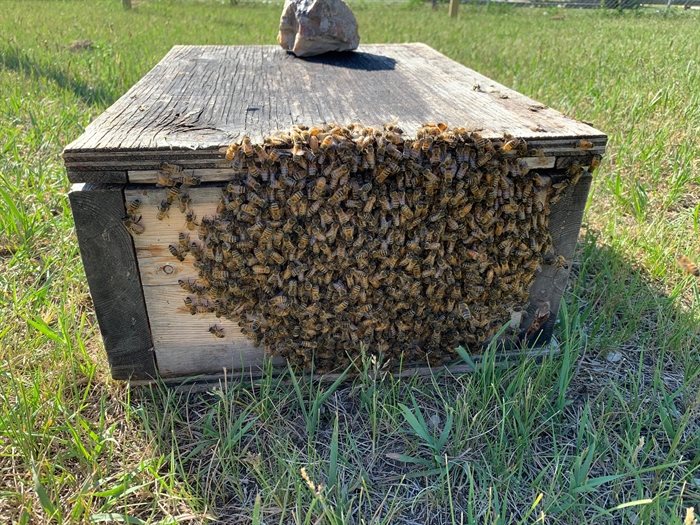From auburnpub.com
By David Wilcox
It's hard to make bad wine. But it's easy to make bad mead.
That's one reason David Lane was inspired to pivot from making wine to making mead, which involves fermenting honey instead of grapes to produce an alcoholic beverage. Now, he does just that on his Ledyard property through Wild Nectar Mead. Lane obtained a farm meadery license from New York in November 2019, the second ever issued by the state, he told The Citizen.
A fifth-generation Oregonian, Lane was taught how to make cider on the state's coast by his grandfather. He later switched to pinot noir. Then, in 2014, he tried fermenting honey and never turned back.
"I fell in love with the challenge," he said. "It's really easy to get a very bad outcome, so the good outcomes are more rewarding."
Lane moved to New York to take a job at Cornell University's Institute for Climate Smart Solutions. As he acquainted himself with the area, he approached local beekeepers to source honey. Interacting with them made him even more passionate about mead, he said, as he learned the importance of saving honeybees. The pollinating insects are widely believed to be going extinct.
In that moment, saving honeybees became as much a part of Wild Nectar Mead as the challenges of fermentation, Lane said.
"It's not just about more alcohol," he said. "I call it the bee-cause."
Shortly after the business was licensed, the COVID-19 pandemic began. Lane wasn't too slowed down, he said, as he spent the time fermenting, tweaking his recipes and getting bottle labels approved by the state. He's also been preparing a meadow on his Ledyard property, which lies about two miles from Cayuga Lake, to support honeybees with abundant wildflowers.
While Lane buys honey from local producers for now, producing his own is a possibility. He would hire beekeepers to keep the population alive during winter, among other challenges.
Wild Nectar Mead owner David Lane at his production facility in Ledyard.
Honeybees can venture as far as 5 miles from their hives, Lane said, and each different source of nectar in that area means a different varietal of honey. Each nectar has the essence of where it grew, from basswood trees to clover flowers, from wildflowers in the summer to goldenrod in the fall. As a fermenter, that differentiation is what drew Lane to producing mead.
"Honey sometimes needs various chemical nudges," he said. "It's a big puzzle figuring out how to get the chemistry just right for each varietal."
Producing mead requires adding the right amount of water to the honey and accounting for many variables, Lane said, such as the strain of yeast being used, environmental conditions and the chemistry of the honey. Though some believe fermentation and aging should take months or even years to make palatable mead, Lane is mastering a process that takes about a month.
"I've done a lot of experimentation to figure out how to do it faster," he said. "It's about finding the sweet spot."
Wild Nectar Mead in Ledyard.
Tart cherry and lavender Wild Nectar Mead are now available at the Village Market in Aurora and the Underground Bottle Shop in Auburn. Lane has also been selling mead at market events in the village and Rochester, and he's received interest from local businesses about serving it on tap or by the bottle. Additionally, the Wild Nectar Mead Club offers three bottles quarterly.
Lane is weighing a physical location for his business. He lives on the Ledyard property where he produces mead now, but if he were to open a tasting room to the public, he might prefer to move somewhere else. He's been eyeing properties on Route 90 with a view of the lake, he said. He'd like to offer educational and music events there as well.
Lane would probably find a following for that, as the popularity of mead has been spiking lately. Often referred to as the world's oldest beverage, it ranges in alcohol content from 5% to 20%.
Lane believes mead has become more popular for some of the reasons other craft beverages have, such as the locavore movement. As a farm meadery, he noted, all the honey he uses must come from New York. But he also believes mead has an appeal of its own. Honey is associated with many health benefits, and the beverage is gluten-free. Its history just sweetens the pot.
"It has a long history, but then it fell out of favour with history," Lane said. "So it feels like a comeback drink to a lot of people."

.jpg)
.jpg)



.png)

